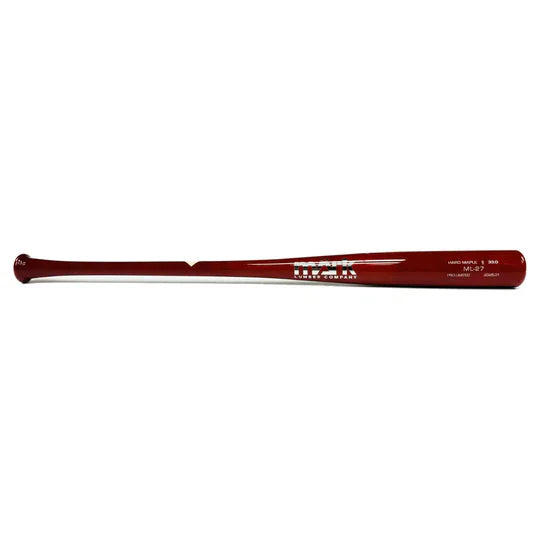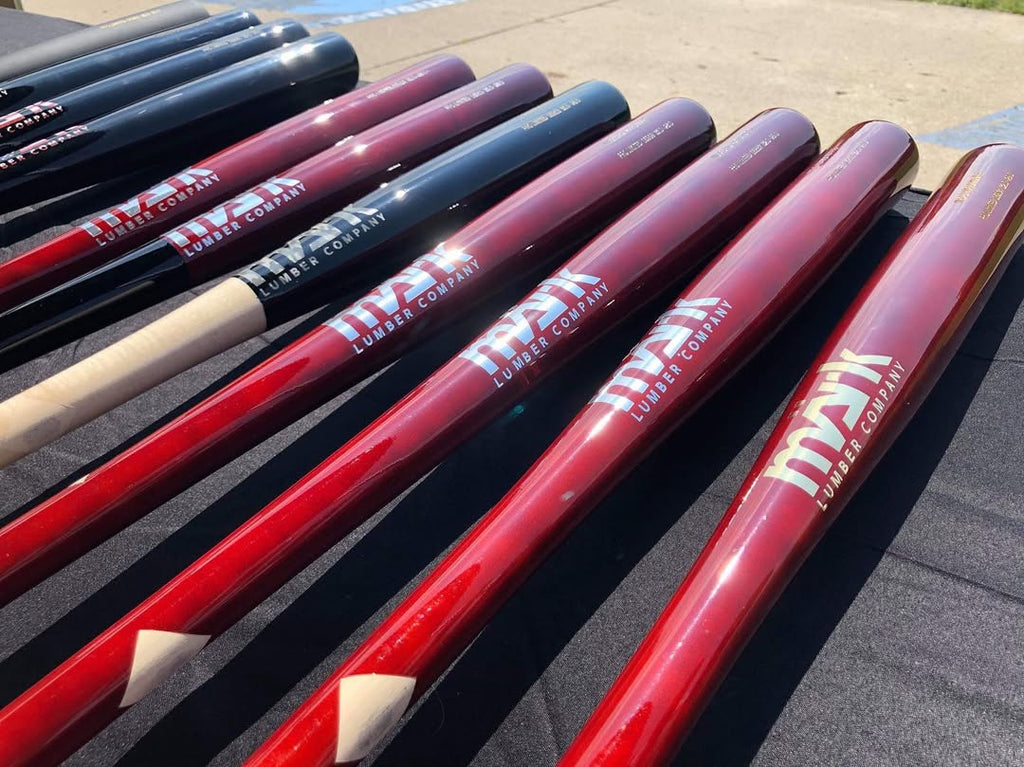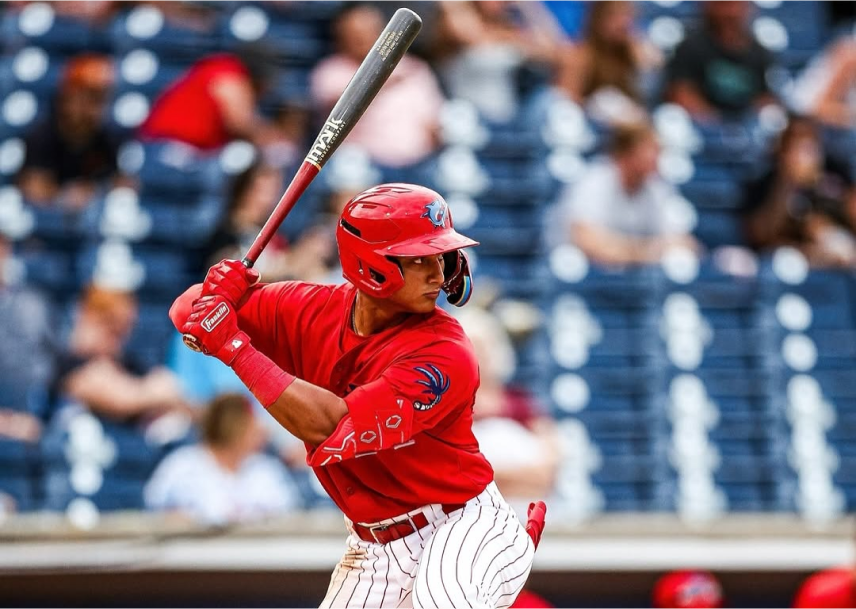
Torpedo Bats - What Are They and Why They Might Change Major League Baseball Forever
Baseball is a game steeped in tradition, but the sports culture constantly evolves. Enter the torpedo bat, an idea about which few players seem to know, that could change the face of the game. So, in this article, we look at what a torpedo bat is, its unique design, and how it could impact the future of baseball. Considering its remarkable engineering and design, it has the potential to be the next big thing in the majors. So, in this article, we look at what makes a torpedo bat unique, how it can change the nature of the game, and how it matches up against your regular wood bat. We also compare the torpedo bat vs the regular bat, highlighting this revolutionary design's key differences and benefits.
What is a Torpedo Bat?
Torpedo bats are relatively new in baseball bat design and feature a special shape to alter how baseball is played. Unlike their wooden counterparts, these are aerodynamically optimized for faster flying speeds. The compact design of the bat, which has less weight in certain places, gives the player a faster swing and more control. This soul-tingling design propels the speed of the swing to its ultimate capacity without losing dynamic performance, which in regular bats is never the case. It is believed that these innovations may enhance faster discharge speeds of the balls and, ultimately, player performance.
Torpedo Bat vs Regular Bat: Key Differences
|
Feature |
Torpedo Bat |
Regular Bat |
|
Shape |
Aerodynamic, streamlined for faster swings |
Traditional shape, heavier, and more balanced |
|
Material |
Advanced composite or wood with optimized design |
Standard wood or metal |
|
Swing Speed |
Faster allows for quicker adjustments in the swing |
Slightly slower due to weight distribution |
|
Durability |
Potentially more durable with modern composites |
Durable, but subject to wear and tear |
|
Power |
Potential for faster ball exit speeds |
Depends on the player’s swing and bat material |
|
Control |
Greater control due to lighter, optimized design |
Typically offers reasonable control but has a heavier feel |
Still in the development phase, these bats have already excited players and analysts about the prospect of this bat changing hitting dynamics. The torpedo bat is lighter and faster than most bats, and it promises to put power in the player's hands with the swing, which can translate into better performances at all baseball levels.
Best MLB Bats: Can Torpedo Bats Compete?

There is tough competition when it comes to being the best MLB bats. Wood baseball bats have been used for decades, and the biggest stars in the game prefer model bats from well-established brands such as Louisville Slugger, Rawlings, and Marucci. The bats are popular due to their consistency, feel, and old-fashioned craftsmanship.
However, the torpedo bat can threaten to dislodge these market leaders by offering a more aerodynamic shape that allows higher swing and ball exit speeds. While the torpedo bat will not displace the vintage wood baseball bat in one night, it is a fascinating option for players wanting to gain a technological advantage. First trials suggest that the torpedo bat can deliver more consistent results regarding distance and control than traditional bats, making it a prime candidate for the best MLB bats in the years to come.
How a Torpedo Bat Could Change MLB Forever
The inclusion of torpedo bats would have a profound impact on Major League Baseball. Players utilizing this technology could potentially have faster swing speeds and thus be capable of hitting for greater power, but still possess accuracy. The aerodynamic design could result in higher ball exit speeds, with more home runs and offense.
Moreover, the torque-based attention to speed and efficiency of the torpedo bat could dramatically affect how pitching is executed. With faster swings and harder hits, pitchers could be forced to re-craft their strategies to contend with the greater offensive potency of torpedo bat players. This could electrify the game's character, rendering it more intriguing for the audience and challenging for players and coaches.
The Science Behind the Torpedo Bat
The design of the torpedo bat goes beyond its shape. It also features high-tech materials and design concepts meant to maximize performance. The streamlined shape of the bat reduces air resistance during swings, which allows for higher bat speeds. The high-tech composite materials used in the construction of the torpedo bat also allow for a lighter and stronger frame, both in durability and speed. The barrel design also aims to raise ball exit velocities so players can achieve more powerful hits with greater accuracy. The torpedo bat's design is consistent with principles of aerospace technology, where efficiency and speed are paramount, so it looks like a promising advancement for the future of the game of baseball.
Why Torpedo Bats Are Gaining Attention Among Players and Analysts
-
Increased Swing Speeds:
Allows players to generate faster swings
Enhances power and control during hits
-
More Consistent Ball Exit Speeds:
Leads to more home runs and better batting averages
Achieves powerful hits with greater accuracy
-
Performance Enhancements:
Blend of speed, control, and power
Promises to deliver a performance combination not found with traditional bats
The Future of Torpedo Bats in Baseball
The future of the torpedo bat in baseball looks bright. The torpedo bat will evolve as the players experiment with this new technology. With more and more players pushing the limits of what can be done with such a bat, Major League Baseball may see the game evolve when it comes to the style of hitting at the professional level. If the torpedo bats can enhance the performance of players and raise the level of excitement in the game, we could see this innovation finding its way to becoming commonplace. Over time, the torpedo bat could revolutionize the sport, bringing new opportunities for players, coaches, and fans.
Why Choose Mark Lumber for Your Baseball Bat Needs

If you are looking for a baseball bat with traditional craftsmanship and the latest technology, look no further than Mark Lumber, a recognized name in baseball for high-quality wood baseball bats. Our bats, well-known for their detail, are meticulously handmade from top-notch materials, ensuring they are enduring, accurate, and offering an improved feel to players at every level.
FAQ
How does the material of a torpedo bat impact its performance?
The material quality of the make of a torpedo bat determines its performance. In most cases, the bats are constructed using high-grade composite materials or wood, which are chosen due to their ability to deliver high strength with a light structure. The composite materials are supplied with added flexibility, making the bat lighter in certain parts without losing strength. This design gives the torpedo bat maximum power and minimizes the effort needed to generate faster swing speeds. In contrast to traditional wood bats, which are known for their stiffness, composite torpedo bats are designed to optimize ball exit speed, enabling players to hit the ball harder and farther. This blend of material selection and design gives the torpedo bat its edge in terms of performance.
Will torpedo bats be approved for use in youth baseball leagues?
Torpedo bats are not approved in most youth baseball leagues, like Little League or Pony Baseball. Those organizations have rigorous standards concerning bat performance. While torpedo bats promise a seductive allure, they must be rigorously tested and certified to particular standards before they are welcomed. With the bat's advanced design and potential for greater performance, it could be a while before the bat is tested and approved for play at the youth level. But if the bat is approved as safe and effective, it could end up in youth leagues one day as an alternative to the standard metal or wood baseball bat.
What are the potential downsides of using a torpedo bat?
While the torpedo bat has some pluses on the performance side, there are also some potential negatives. First, since torpedo bats are in development, their long-term durability is untested. The advanced composite materials may yield more power but may be more susceptible to wear from overuse, especially at high-stress levels like those at professional play. In addition, the aerodynamic design of the torpedo bat may be unusual to some players, and therefore, it may take time to get used to its new swing dynamics. As with any new technology, there is also the risk that it will not meet a player's needs in terms of control and consistency of performance. Over time, player response and regular testing will determine whether the benefits outweigh the drawbacks.
Could the introduction of torpedo bats change how pitchers approach the game?
If torpedo bats can be successfully incorporated into MLB and other professional leagues, they could revolutionize how pitchers approach their business. The increased swing speed and ball exit speed that torpedo bats generate could force pitchers to change their game strategy. With faster swings and more power at the plate, pitchers may be forced to alter their pitching styles to counteract the enhanced offensive strength. Pitchers will need to change the locations of their pitches, throw more off-speed pitches, or employ more variety in their delivery to avoid being overwhelmed by the new technology. The increased offensive production could lead to more home runs and extra-base hits, making the game more difficult for control- and precision-focused pitchers.
How do torpedo bats compare to other high-tech bats in terms of performance?
When torpedo bats are contrasted with other high-end bats like BBCOR-approved bats or composite bats, there are some differences in performance. Torpedo bats stand out as they focus on drag reduction and velocity enhancement in the swing. With this, players can get faster bat speed with less effort. While other high-tech bats, such as composite or BBCOR-approved bats, focus on power and endurance, torpedo bats attempt to take it one notch higher by providing a blend of speed, control, and power. The aerodynamic design of the torpedo bat is also meant to provide ball exit speeds, a role that can be even superior to many high-tech bats used nowadays. Nevertheless, it is notable that every type of bat has its strengths and weaknesses, and players will favor one over another based on hitting style and personal preference.
Conclusion
The torpedo bat is a significant technological breakthrough in baseball bat design, potentially enhancing swing speed, control, and power. With its aerodynamic design, the torpedo bat has the potential to revolutionize the art of hitting by allowing players to hit harder and swing harder, thus playing more excitingly. While it is not yet ready for approval by MLB, the future of the torpedo bat is bright, especially when tested and refined as its technology is. If this technology works as well as expected, it will revolutionize the game, introducing a new era of baseball hitting focusing on strength and speed. Meanwhile, the traditional wood baseball bat will dominate the professional leagues, and the torpedo bat waits patiently until it is accepted.







